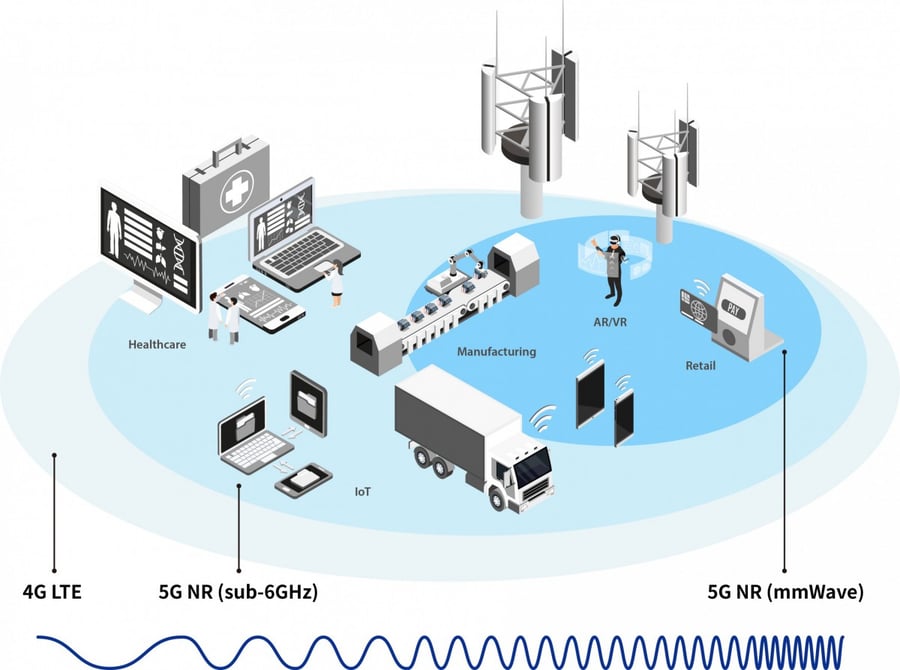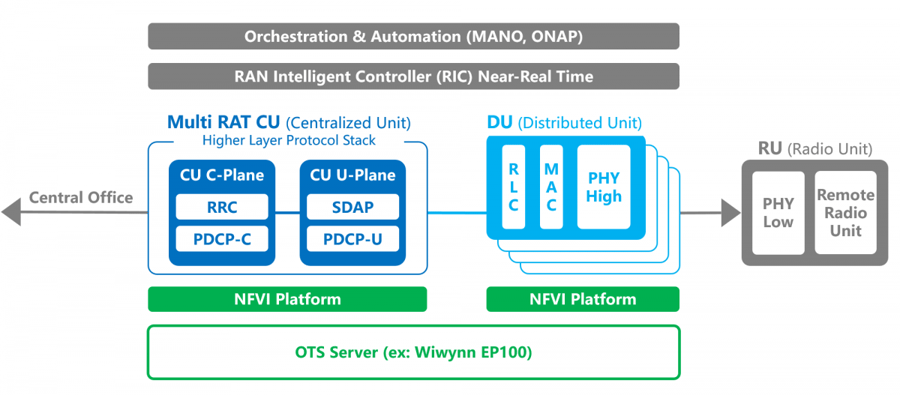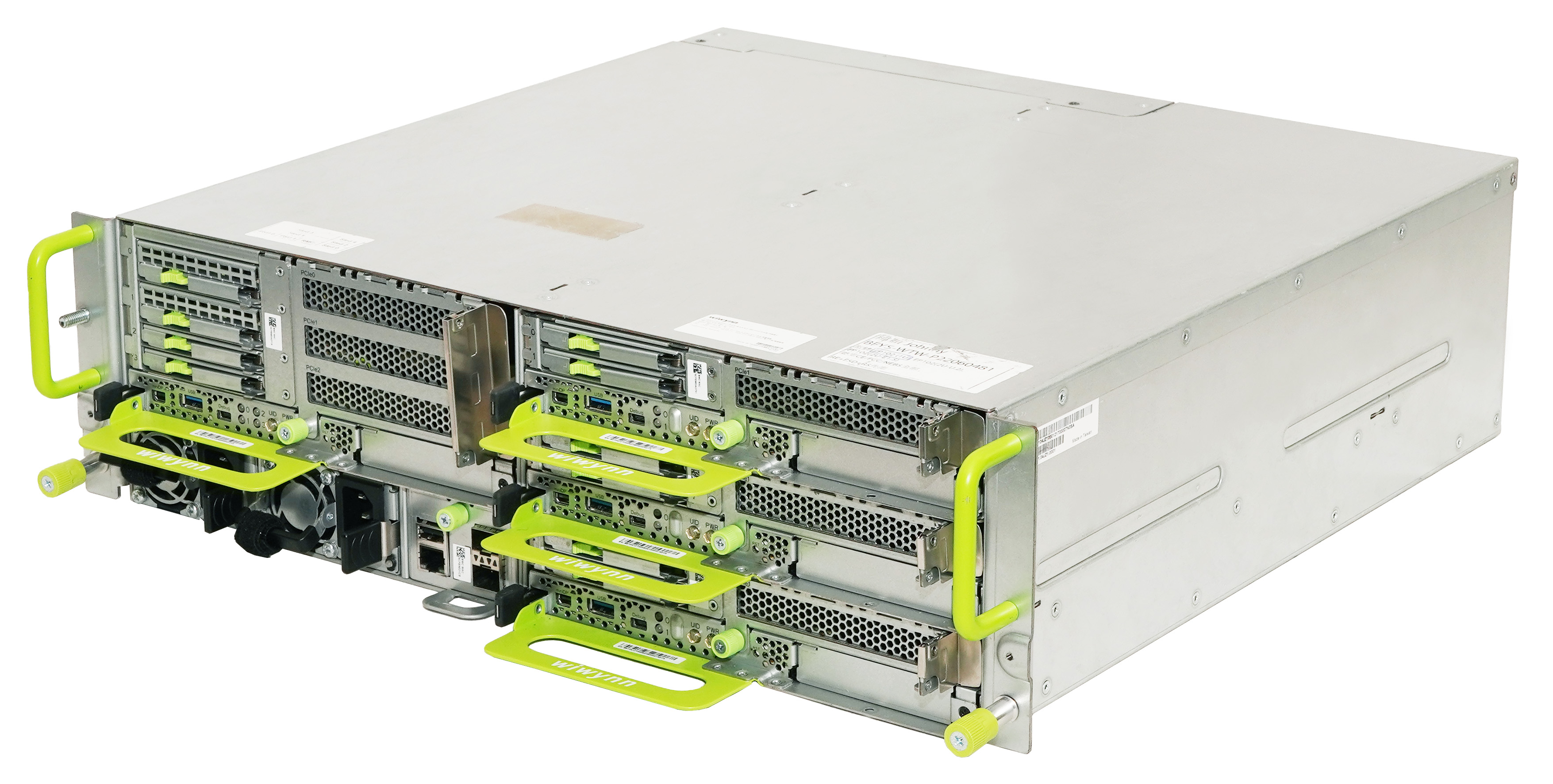Flexibility
One DU can support multiple RUs with multiple access technologies including 5G NR and 4G LTE in different bands. The DU/CU resources can also be leveraged with MEC resources.
Hundreds of new cloud services and edge applications can run on this new 5G digital backbone. In transportation, real-time communication helps improve safety and traffic flow for vehicles. Healthcare providers can monitor patients by remote, use AI to make accurate diagnoses, and help hospitals run more smoothly. Manufacturers can use 5G networks to run high-efficiency smart factories while retailers can create seamless experiences for customers.
While promising ultra-high speeds, low latency, and greater reliability, 5G revolution is but part of the story as there’s also an evolution in existing technologies with new generations of fiber, cable, Wi-Fi, and short-range technologies.
As most of you are aware, with the upcoming of the 5G era, our industry is quickly expanding from Public and Private Cloud to Central Office (CO), and to Edge at Radio Access Network (RAN). The availability of edge computing offers lots of previously unavailable applications such as real-time artificial intelligence and others.
The edge computing can dramatically improve user experience through cases like virtual reality games by decreasing its latency. These cases, however, show that Cloud and Edge infrastructure must adapt and evolve according to the demand of these applications.
Some of the Central Office requirements may apply to edge applications as well, hence, the overlap in the central office and the edge solutions we are offering. Offering the same solutions for Central Office and Edge simplifies the product SKUs and reduces the CAP and OP expenses.
5G Virtualized Radio Access Network (vRAN) Solution is the critical step for mobile networks evolution, promising to intelligently boost capacity, dramatically reduce costs, and enhance your experience.
Multiple Service Criteria and Base Station Densities Required

Introducing a flexible and agile 5G network with a cost effective solution is an imperative topic for each operator.
vRAN with Cots Servers Enable A Flexible, Agile and Cost Effective 5g Network
One way that operators are looking to modernize the network is to adopt the virtualized radio access network (vRAN) which transforms the notion of proprietary hardware-based base stations into software-based that are more flexible, agile, and cost-effective.
The base stations in 5G era can be divided into three parts: radio unit (RU), distributed unit (DU) and centralized unit (CU). DU and CU and be deployed with commercial off-the-shelf (COTS) servers and virtualized network functions to bring benefits including:

One DU can support multiple RUs with multiple access technologies including 5G NR and 4G LTE in different bands. The DU/CU resources can also be leveraged with MEC resources.

The network can implement dynamic applications and scale out agilely by deploying different virtualized network functions (VNF) and not be constrained by proprietary hardware and software bundle.

The adoption of commercial off-the-shelf (COTS) servers could greatly reduce the infrastructure costs compared with the proprietary ones and spare operators from vendor lock-in.
5G vRAN Stacks Based on NFV Infrastructure
3GPP R15 has standardized the separation of the upper from the lower parts of the RAN. The base stations in 5G era can be divided into three parts: radio unit (RU), distributed unit (DU) and centralized unit (CU). DU and CU and be deployed with COTS servers and virtualized network functions. Operators can simplify the deployment of new features and algorithms for streamlining resource usage.

One DU can support multiple RUs with multiple access technologies including 5G NR and 4G LTE in different bands. Power x86 servers with FPGA or GPU based accelerators can process large amounts of digital signals processing in real-time to perform the CPRI-to-eCPRI conversion.
The Best All-in-one Platform for 5G CU/DU/5GC/MEC and Private 5G Environment
